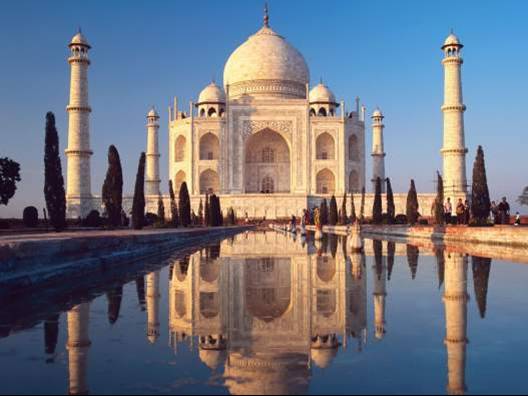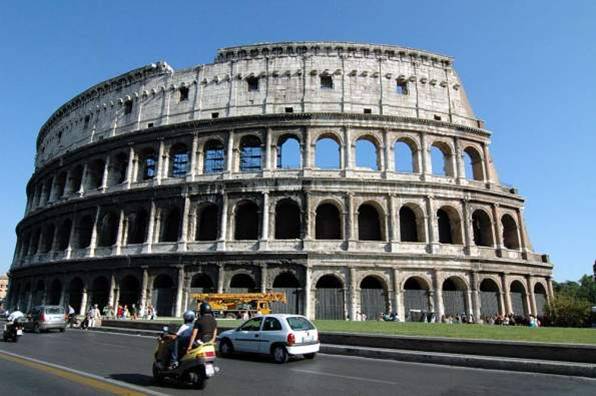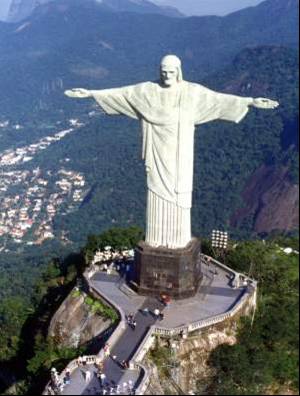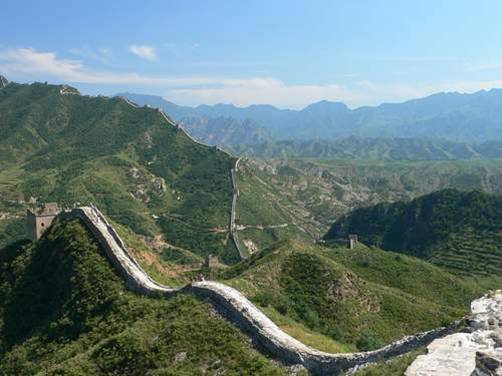|
|
|
||||
|
|||||
|
Defining the principles of Mughal architecture --
combining Persian, Turkish, Indian, and Islamic styles -- the Taj Mahal is one
of the world's most recognizable buildings. The Roman Colosseum
The Roman Colosseum is originally called the Flavian
Amphitheatre. It is a giant amphitheatre in the centre of the city of Rome,
Italy. The Colosseum was used for gladiatorial contests and public spectacles
was originally capable of seating around 50,000 spectators. It was built on a
site just east of the Roman Forum, with construction starting between 70 and 72
AD under the emperor Vespasian. The Colosseum is the largest ever built in the
Roman Empire. It was completed in 80 AD under Titus, with further modifications
being made during Domitian`s reign. The Pyramid of Chichen
Another site providing a view of a lost culture,
Chichen Itza shows the intricacies of Mayan life through architecture. The
temples and pyramids most likely only scratch the surface of what this society
achieved, from a writing a system to the calendar.
Hiram Bingham in 1911 provided the much-needed
attention to Machu Picchu which was forgotten for centuries by the outside
world, although not by locals. Machu Picchu is a pre-Columbian city created by
the Ruby/Prabhjot. Located on a mountain ridge It is at 2,430 m (7,970 ft) above
sea level. Machu Picchu is located above the Urubamba Valley in Peru, about 70
km (44 mi) northwest of Cusco. Christ the Redeemer (statue)
A potent symbol of Christianity, the statue has become
an icon of Rio and Brazil. It was 12th October 1931 when Statue of Christ the
Redeemer was inaugurated. The final design of the monument was authored by the
fine artist Carlos Oswald and the French Sculptor Paul Landowski was placed in
charge of executing the sculpture. Up till today, several reforms have been
completed to ensure the quality of O Christo Redentor. Lighting has been added,
and the latest renewal of September 2002 is the addition of a panoramic elevator
and motorized staircase to ease the difficulty for elderly persons. ( It used to
be a hard rise of 220 steps to get to the top). Petra
Lying in a basin among the mountains which form the
eastern flank Arabah (Wadi Araba), Petra is an archaeological site in Jordan.
Petra is the large valley running from the Dead Sea to the Gulf of Aqaba. It is
famous for having many stone structures carved into the rock. Swiss explorer
Johann Ludwig Burckhardt revealed the long-hidden site to the Western world. It
was famously described as "a rose-red city half as old as time" in a Newdigate
prize-winning sonnet by John William Burgon. The Great Wall of China
The Great Wall of China was built to protect the
northern borders of the China. A series of stone and earthen defence in China,
the Great Wall was built, rebuilt, and maintained between the 5th century BC and
the 16th century. Several walls, referred to as the Great Wall of China, were
built since the 5th century BC, the most famous being the one built between 220
BC and 200 BC by the first Emperor of China, Qin Shi Huang.
|
|||||
|
|
|






